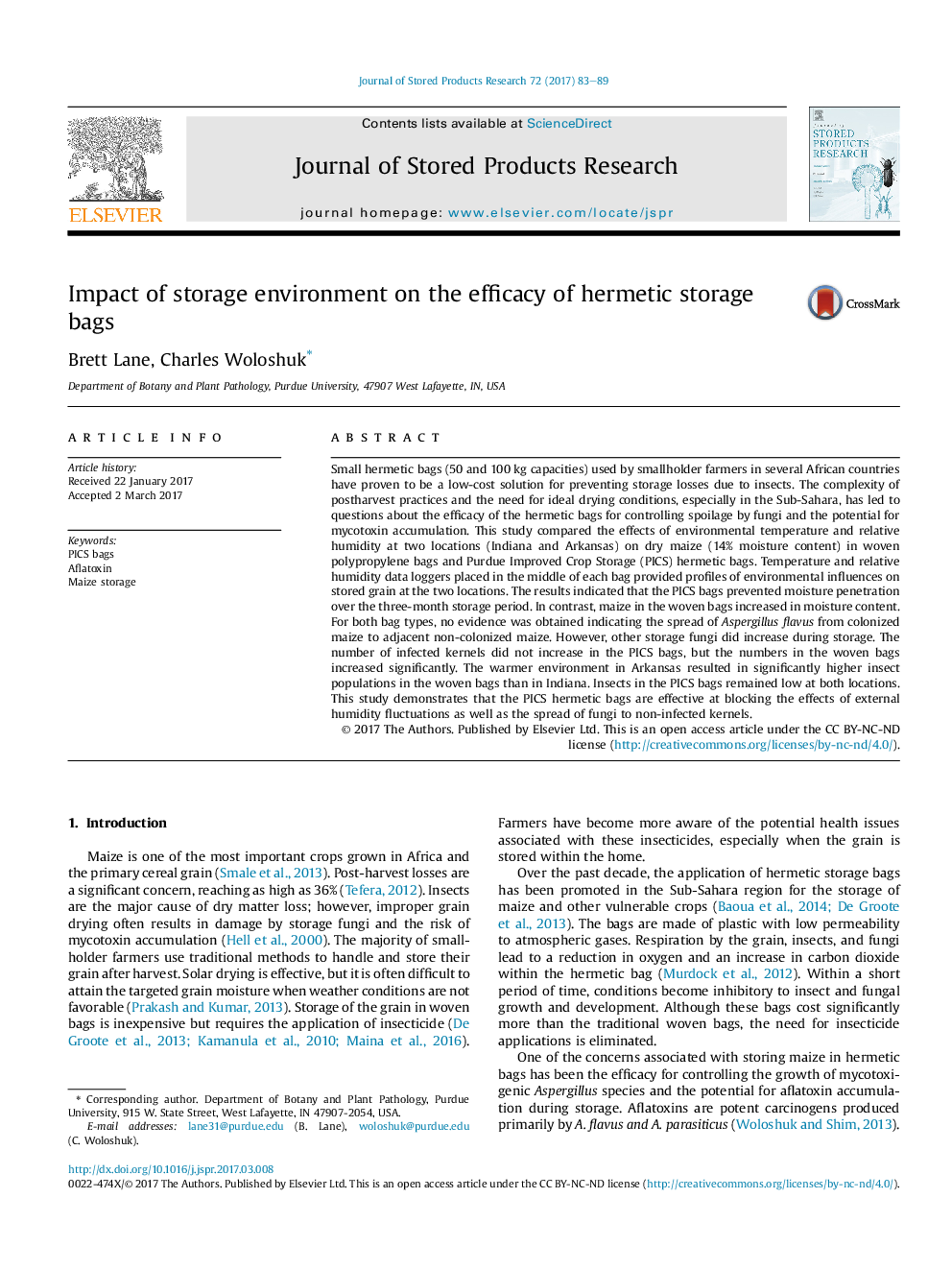| Article ID | Journal | Published Year | Pages | File Type |
|---|---|---|---|---|
| 5762564 | Journal of Stored Products Research | 2017 | 7 Pages |
Abstract
Small hermetic bags (50 and 100Â kg capacities) used by smallholder farmers in several African countries have proven to be a low-cost solution for preventing storage losses due to insects. The complexity of postharvest practices and the need for ideal drying conditions, especially in the Sub-Sahara, has led to questions about the efficacy of the hermetic bags for controlling spoilage by fungi and the potential for mycotoxin accumulation. This study compared the effects of environmental temperature and relative humidity at two locations (Indiana and Arkansas) on dry maize (14% moisture content) in woven polypropylene bags and Purdue Improved Crop Storage (PICS) hermetic bags. Temperature and relative humidity data loggers placed in the middle of each bag provided profiles of environmental influences on stored grain at the two locations. The results indicated that the PICS bags prevented moisture penetration over the three-month storage period. In contrast, maize in the woven bags increased in moisture content. For both bag types, no evidence was obtained indicating the spread of Aspergillus flavus from colonized maize to adjacent non-colonized maize. However, other storage fungi did increase during storage. The number of infected kernels did not increase in the PICS bags, but the numbers in the woven bags increased significantly. The warmer environment in Arkansas resulted in significantly higher insect populations in the woven bags than in Indiana. Insects in the PICS bags remained low at both locations. This study demonstrates that the PICS hermetic bags are effective at blocking the effects of external humidity fluctuations as well as the spread of fungi to non-infected kernels.
Keywords
Related Topics
Life Sciences
Agricultural and Biological Sciences
Agronomy and Crop Science
Authors
Brett Lane, Charles Woloshuk,
